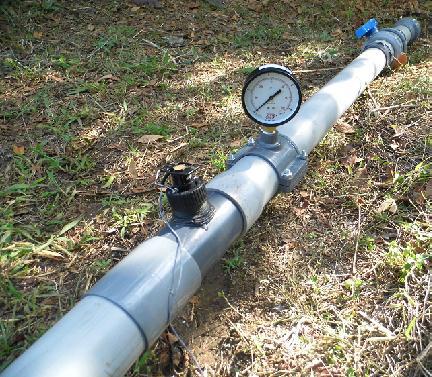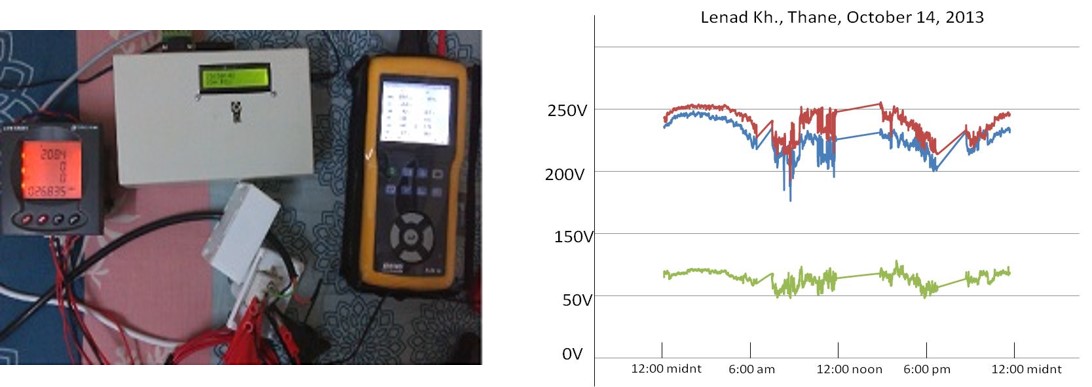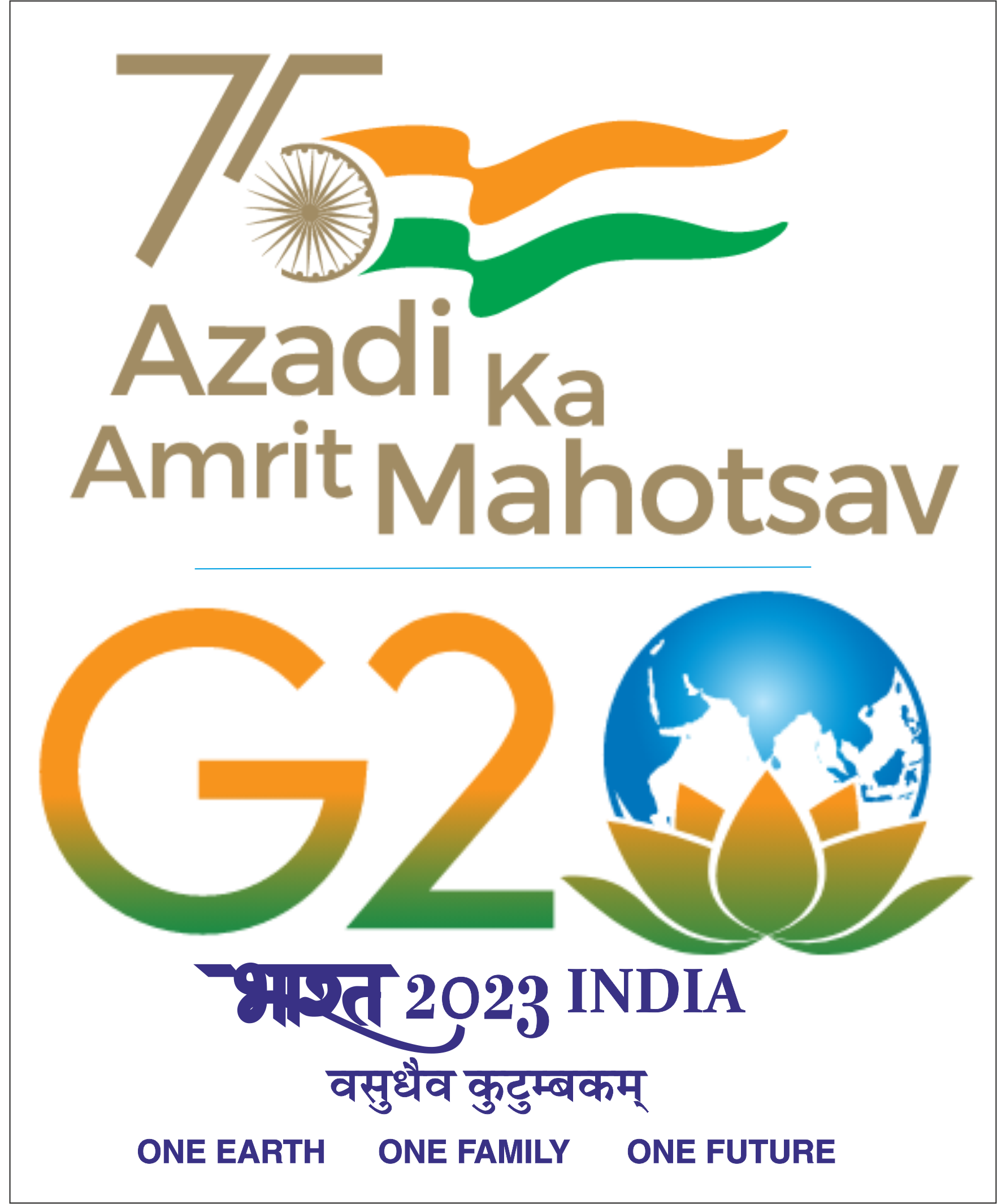Rural Electrification, Energy for irrigation:Technology and Farmer behavior, Solar Photovoltaics, Energy efficiency, Education
- PhD, Electrical Engineering and Computer Science, 2012 Massachusetts Institute of Technology, Cambridge,MA, USA
- M.S. Electrical Engineering, 1995 Boston University, Boston, MA, USA
- M.Sc. (Honors) Physics, 1993 B.E. (Honors) Electrical and Electronics, 1993 Birla Institute of Technology and Science, Pilani, India
- TD 637 Energy for irrigation: Tools for analysis
- TD 623 Rural electrification and development in India
- TD 607 Energy sources and their utilization
- TD 390, TD 490, TD 491 Technology and Development Supervised Learning (TDSL) - Course Coordinator
- "Methodology to quantify crop, irrigation water, and energy linkages in small-holder irrigation systems", Namita Sawant, Sameer Kulkarni, Pankaj Sharma, Akanksha Doval, Energy for Sustainable Development. . (Free download until May 21, 2025: https://authors.elsevier.com/a/1ksNG3TGDqCqJx )
- Khobaragade S., Bhosale P., Jadhav P. (2021) ESCO Model for Energy-Efficient Pump Installation Scheme: A Case Study. In: Bose M., Modi A. (eds) Proceedings of the 7th International Conference on Advances in Energy Research. Springer Proceedings in Energy. Springer, Singapore. https://doi.org/10.1007/978-981-15-5955-6_35
- "Technical paradigms in electricity supply for irrigation pumps: Case of Maharashtra, India", Priya Jadhav, Namita Sawant, and Athira Madhusudhana Panicker. Energy for Sustainable Development 58 (2020): 50-62.
- Sawant N., Jadhav P. (2020) Solar PV for Irrigation in India: Developing a Framework for Determining Appropriate Pump Characteristics for a Region. In: Singh S., Ramadesigan V. (eds) Advances in Energy Research, Vol. 1. Springer Proceedings in Energy. Springer, Singapore. https://doi.org/10.1007/978-981-15-2666-4_48
- Doval A., Jadhav P. (2020) Development of Framework to Estimate Crop-wise, Region-wise Electricity Usage for Irrigation. In: Singh S., Ramadesigan V. (eds) Advances in Energy Research, Vol. 1. Springer Proceedings in Energy. Springer, Singapore. https://doi.org/10.1007/978-981-15-2666-4_46
- Doval A., Jadhav P. (2017) Development of framework to estimate crop-wise, region-wise electricity usage for irrigation. In: Summary Report on the 8th International Conference on Climate Change: Climate Action: Mitigation and Adaptation in a Post Paris World, Tata Institute of Social Sciences, Mumbai: pp 55. https://www.rosalux.in/files/RosaLux/downloads/New%20Uploads%20Publications/TISS-CA/09_TISS_Conference%20Report_Published.pdf
- Lee J, Jadhav P, Reusswig PD, Yost SR, Thompson NJ, Congreve DN, Hontz E, Van Voorhis T, and Baldo MA, "Singlet Exciton Fission Photovoltaics". Accounts of Chemical Research (2013)
- Jadhav PJ, Brown PR, Thompson N, Wunsch B, Mohanty A, Yost SR, Hontz E, Van Voorhis T, Bawendi MG, Bulović V, Baldo MA, "Triplet Exciton Dissociation in Singlet Exciton Fission Photovoltaics". Advanced Materials (2012)
- Jadhav PJ, Mohanty A, Sussman J, Lee J, Baldo MA, “Singlet Exciton Fission in Nanostructured Organic Solar Cells”. Nano Letters (2011)
- Jadhav P, Limketkai, BN, Baldo MA, “Effective Temperature Models for the Electric Field Dependence of Charge Carrier Mobility in Tris(8-hydroxyquinoline) Aluminum”. In Organic Electronics, Meller G.; Grasser T., Eds. Springer: 2010; pp 29-44
- Lee J, Jadhav P, Baldo MA, “High efficiency organic multilayer photodetectors based on singlet exciton fission”, Applied Physics Letters 95, 033301 (2009)
- Celebi K, Jadhav P, Milaninia KM, Bora M, Baldo MA, “The Density of states in thin film copper phthalocyanine measured by Kelvin probe force microscopy”, Applied Physics Letters 93, 083308 (2008)
- Limketkai BN, Jadhav P, Baldo MA., “Electric-field-dependent percolation model of charge-carrier mobility in amorphous organic semiconductors”, Physical Review B 75, 113203 (2007)
- 'ESCO Model for Energy Efficient Pump Installation Scheme: A Case Study', Saurabh Khobaragade, Priyanka Bhosale, and Priya Jadhav, International Conference on Advances in Energy Research, IIT Bombay, December 2019, Mumbai, India. Click here
- 'Policy tool to identify the required solar PV pump characteristics for a region in India: Case study of the Maharashtra solar PV pumps scheme', Namita Sawant, Pankaj Sharma and Priya Jadhav, Presentation at 38th International Energy Workshop at International Energy Agency, June 2019, Paris, France. Click here
- 'Development of Framework to Estimate Crop‐wise, Region‐wise Electricity Usage for Irrigation', Akanksha Doval, Priya Jadhav, Presentation at 8th International Conference on Climate Change at Tata Institute of Social Sciences, Climate Action: Mitigation and Adaptation in a Post Paris World, August 2017 , Mumbai, India. Click here
- ‘Power factor issues on agricultural feeders: Investigated through the case of a village in Sangli, Maharashtra’, Selected for Oral/Poster presentation at ICAER 2015; Also presented to the Maharashtra Electricity Regulatory Commission Click here
- Solar PV For Irrigation In Maharashtra.
- Study on agricultural electricity consumption in Maharashtra, October 2016 – A study conducted for the Maharashtra State Electricity Distribution Company Ltd.
- Solar Microgrid Analysis in Amle, Palghar, Thane, 2013 – A study conducted for the village and the NGO to determine the usage and possible excess energy in the system and suggest further income generating activities.
- Energy Audit in Haryana distribution utilities, June 2017; Study conducted for Dakshin Haryana Bijli Vitaran Nigam Ltd. and Uttar Haryana Bijli Vitaran Nigam Ltd.
- Design and analysis of a pilot project for power factor improvement on agricultural feeders in Dakshin Haryana, March 2017; Study conducted for Dakshin Haryana Bijli Vitaran Nigam Ltd.
- Education as a path to progress: Is it working? Loksatta, 10 August 2025 Marathi, English
- Smart Metering: A new opportunity to optimize renewable integration on the grid
- Mahavitaran (MSEDCL) needs to engage with farmers, Loksatta, March 16, 2023 Marathi, English
- The kind of engineering education we need, India Express, December 14, 2022 English
- Mahavitaran’s problems of agricultural supply and long term solutions, Loksatta, December 2020 Marathi, English
- Electricity supply and the plight of farmers, Lokmat, December 2019 Marathi, English
- Beneficial effect of capacitor usage with agricultural pumps, Lokmat, August 2019 Marathi
- Solar pumps and solar feeders schemes in Maharashtra (Lokmat, October 2018) Marathi, English
- ‘Sustainable Energy Solutions for Grassroots Development’, Priya Jadhav, Anand Rao, SQ, Bombay Chamber of Commerce and Industry, Vol. IV No.1 January-March 2014
Philosophy and Vision:
My research relates to energy, and rural electrification, with a focus on energized irrigation, and relating to the technological aspects as well as behavioural aspects of farmers and utility.
I am interested in engineering education and would like to work with regional engineering colleges on local issues in my field of interest. I believe that significant and lasting change can only be achieved through involvement and capacity building at all levels of society.
A few potential research areas for PhD candidates:
Farmer behaviour and efficient technologies
Along with quality of electricity supply from utilities, farmer behaviour is an important factor in energy efficiency in pumping. Preliminary data from field shows that farmers indulge in energy inefficient behaviour sometimes to optimize their outcomes, sometimes due to misinformation, and sometimes both. A very simple example: farmers are known to remove capacitors from pumpsets installed in schemes s even though capacitors do not harm their usage of pumps in any way. This topic involves understanding the underlying reasons and hence identifying further solutions either of a technical nature, interventions like awareness building, or policy changes.
Enhanced water pumping technology: Promoting efficiency with convenience
Several of the problems with pumps experienced by farmers in India - like varying water head, and low voltages can be addressed in the pump design. These enhancements will lead to more efficient pumps and also add to convenience for the farmers, for example through fewer pump breakdowns, and better operation at lower voltages. The topic involves (1) an evaluation of potential benefits (2) exploration and development of power electronics solution(s).
Collaborator: Amol Phadke, Scientist and Group Leader, International Energy Studies Group, Lawrence Berkeley National Laboratory, USA
Evolving new paradigms of utility service in energized irrigation through communication technology
The cost of IOT (Internet of Things) and sensors technology has dropped steeply in the last few years. This is being leveraged to provide decentralized, renewable energy services in rural areas. IOT/sensors/smart technology, could be used to explore new paradigms in energized irrigation, like feeder franchisees, third party pump management, water as a service, and remote management services. Such solutions could address the use of diesel pumps, provide convenience and improved service to grid connected farmers, while yet providing financial gains to the utility and environmental benefits to society.
Collaborator: Amol Phadke, Scientist and Group Leader, International Energy Studies Group, Lawrence Berkeley National Laboratory, USA
Frameworks for energy-water usage in agriculture
This topic develops frameworks based on secondary data to identify water and energy usage by various crops in any region. The concerns of climate change, ground water depletion and skewed subsidy distribution among farmers of the different socio-economic strata, make this a very relevant current topic.
Highlights of some specific completed and ongoing projects:
- Capacitor usage with agricultural pumps
- Energy audit of an agricultural feeder in Nasik
- Case study of a rural distribution cooperative
- Energy efficiency in pumping
Tools:
- GIS for distribution system
- Voltage monitor
Capacitor usage with agricultural pumps
Power factor improvement using capacitors on agricultural loads is a low-capital and non-intrusive method to reduce resistive losses in distribution systems and provide improved voltage levels to consumers, and yet the power factor on agricultural feeders in India is often around 0.8.In this project we look at the reasons for this status through a case study in the sugar cane belt of Maharashtra and found that it was apathy of the utility, lack of incentives and disinformation for the farmers that led to the current situation. A pilot project with installation of capacitors on all pumps on one DT was carried out to understand the process better.

Measurements and simulations showed a 20% reduction in distribution loss
Case study of a rural electricity distribution cooperative
Most of rural distribution is carried out by large public sector companies. Little incentive to improve efficiencies, or quality of supply, leaves the rural consumer with bad service and the utilities in a poor financial state. While the Rajiv Gandhi Grameen Vidyutikaran Yojana promoted franchisees for rural distribution, but the only model that has taken off is with regards to metering and billing. Models with higher involvement of energy supply, and infrastructure management have not taken off. In this project we analyze rural cooperatives to understand the challenges and incentives for a distribution utility in a rural area.
Energy audit of an agricultural feeder in Nasik
Electricity consumption in agriculture is fraught with issues at an operational as well as institutional level. Poor quality of supply, poor metering and accounting at every level, and the purported inflation of agricultural consumption by utilities are all related, and lead to a poor situation for all stakeholders. This project attempts an energy audit on one feeder and tries to understand various aspects like technical losses, feeder design, status of metering and billing. A detailed accounting may also lead to a truer picture of the financial feasibility of distribution on an agricultural feeder in a typical agrarian region of Maharashtra.
Energy efficiency in pumping

Agricultural pumping comprises 26% of electricity consumption in India. The combination of poor quality of supply and subsidies leads to inefficient energy usage by farmers. In this project we conduct some measurements to find energy efficiencies In this project we explored the process that farmers follow in deciding what pump to use and if it is appropriate for the application. We also built a tool appropriate for measuring efficiencies of pumps operating with flow rate between 5m3/hr to 150 m3/hr and a head of 70 psi. Tests on pumps in Dahanu, Thane, showed that efficiencies were much lower than pumps recommended by the Bureaus of Indian Standards, and could result in energy savings with low pay back period on the investment if the subsidy was not included, and even with the subsidy included, the investment would pay for itself in a few years.
GIS for distribution system
Technical systems to meter, log, and manage energy usage, could result in a better system for all players – farmers, utilities, state. Large towns are being upgraded with GIS systems through the R-APDRP scheme, a low-cost system using open-source technologies could help in voltage regulation, reduced theft, load management. We are developing a GIS system for rural distribution which can estimate losses and voltage drops on LT and HT lines.
Voltage Monitoring
A low cost remote voltage monitor, that uploads data to a central server can be used to monitor the quality of supply in rural areas. The monitor and data collected in Lenad Khurd village, Shahapur taluka, Thane district

Links to other documents:






